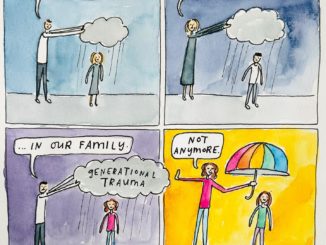Two people have asked me questions about reward charts in the last week or so, so that seemed like a reasonable question to answer next.

The reason for both of them asking it was because I put “reward charts” — i.e., you do x, you get a sticker on your chart (and often when you “fill up” on stickers then you get some kind of reward) — in the same category with “clip charts” — i.e., the red/yellow/green classroom system where doing something bad means you have to move your clip down to yellow or red or whatever. Like, I spoke about them both in the same sentence: “using clip/reward charts is something I wish weren’t in classrooms” type of thing.
Both times, the person commenting was surprised to see me group them in the same category, which is fair. On its face, a clip chart seems to be more about shaming the child by publicly displaying that they’re doing worse than everybody else, while a reward chart is supposed to be positively reinforcing good behavior by acknowledging it. And don’t get me wrong, I’m not saying the two are exactly equivalent.
Here’s the problem. In a group setting—a school, usually, but I’d also argue for this being true of a group of siblings at home—a reward chart is, also, publicly displaying that one child is doing worse than everybody else. Like, maybe not on day one, but everyone can understand that when you look at it on day six, there’s gonna be one kid with a bunch of stickers and one kid with almost no stickers, right? Because otherwise you’re saying that all of the children are going to behave equally well all the time (which we all know isn’t the case, or you wouldn’t need behavior modification strategies in the first place), OR, that you’re going to reward all of them equally much for different behaviors. And I have seen the latter technique, by the way! “Jacob, you get a star sticker every time that you do all of your chores without complaining, and Hannah, you get a star sticker every time that you go all afternoon without devolving into a screaming meltdown and throwing furniture.”
If Jacob is anything like I was as a child, he immediately feels pretty slighted, because never once in his life has he screamed or thrown furniture, so why doesn’t he get any stars for that? And Hannah may or may not be capable of meeting the expectation, no matter how obvious and reasonable it sounds, and in the moment when whatever is triggering her is STILL triggering her and she goes to scream and throw something, her “higher thinking” brain is 99% of the time not going to say “Gee, actually, I shouldn’t do this, I want a sticker.” If she thought of a sticker at all — if you interrupted her meltdown with “Hannah, don’t you want a sticker,” she might be equally likely to say “NO! I DON’T CARE ABOUT A STICKER!”
So assuming that you aren’t rewarding the children for different behaviors, but for collective behaviors—like in class, we’ll say “sitting still on the carpet during circle time”—adding stickers (or reward metrics in general, don’t get hung up on the sticker part of this: beans in a jar, checkers in your cup, whatever) into the mix does nothing to examine why a struggling child is struggling, or what expectation it is that they can’t meet. It does nothing to tweak the environment for them or give them support.
What it does is prove that the adult thinks that the reason the child isn’t meeting the expectation is because they aren’t motivated, rather than because they can’t. And as I’ve said before: I always assume the child is motivated, and that if they aren’t doing it, it’s because they can’t. And then I examine that “can’t” and see if I can figure out what’s behind it, and therefore solve the problem with the child.
Because reward charts also move motivation from the intrinsic, internal sense, to the extrinsic, external sense. You are taking their reason for wanting to do it from “because I want to, because I love the person who’s asking me to do it,” etc, to “because I’ll get a sticker/earn an ice cream/whatever”. It creates a disconnect and a barrier between doing the task and the reward for the task.
Is that always bad and horrible and ruining your kids? Nah I don’t use that strong of language for things. 
And, like I alluded to, if your choice of extrinsic motivator isn’t strong enough, then there’s going to come a time when a kid is at very least thinking—and very possibly saying—”Screw your stickers, I don’t care about them right now,” and if the only tool in your toolbox has been trying to externally motivate your child and they only know how to seek extrinsic motivation, then both of you are out of luck as to how to proceed forward from that.
So there’s why I think reward charts aren’t always great. They divide any big group of kids into who are the “good kids” and who are the “bad kids” no matter how much adults pay lip service to it meaning otherwise. They outsource motivation to an external motivator, which is fine sometimes (especially when self-initiated) but should be used with thought and moderation. And, a struggling child is going to run up against it sometime, and if it’s all they’ve ever known for motivation then neither the adult nor them is going to have any tools to figure out how to solve that situation.
What are you supposed to do instead if you aren’t rewarding kids to get them to do things? Build a relationship with them. I think humans (of all ages) are pretty much motivated to do pretty much anything in the world because either they find it inherently motivating, or they have a relationship with someone who wants them to do it, or because they’re afraid of what will happen if they don’t. Rewards are leaning on the third option while pretending to be the first option.



